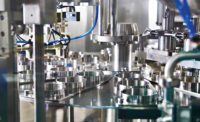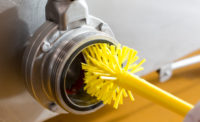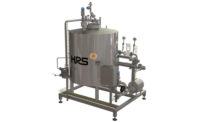Meet the panel
- Don Bohner, Tetra Pak Inc., Vernon Hills, Ill.
- Keith Ortman, Tetra Park Inc., Vernon Hills, Ill.
- Mark Litchfield, GEA, Columbia, Md.
- Melissa Fryer, GEA, Columbia, Md.
- David Miles, MicroThermics, Raleigh, N.C.
- Tim Wickersham, Litre Service Inc., Auburn Hills, Mich.
Pasteurizers, homogenizers and separators are at the core of any dairy processing plant. Running them efficiently and keeping them clean is vital. Dairy Foodsconvened a “virtual roundtable” of suppliers and asked them how plant managers can get the most from the equipment. Following is an edited transcript.
Dairy Foods: Discuss the operation and cleaning of heat exchangers, homogenizers and separators as they relate to food safety.
Mark Litchfield: The average age of a machine in service in North America is 30 years, which means there are many different designs. The manual should be the ultimate reference for establishing safe operations and recommended cleaning-in-place (CIP). For older machines, regular maintenance is critical. Replacement parts should come from a certified source, and repair work should be performed in accredited facilities.
Melissa Fryer: Uneven flow across the plate in a plate heat exchanger can cause buildup and residue that can be difficult to clean and thus can harbor bacteria. Plates developed to have an even velocity will have a reduced amount of residue and be more easily cleaned with CIP.
The recommended flow rate and corresponding pressure drop should be included as part of the system design. The CIP flow rate should not be assumed, as this can vary greatly by the product being processed and the manufacturer of the equipment.
Tim Wickersham: Any surface anomaly — such as pitting, rough welds, blistering and cracks — can become an area in which contamination could occur. For that reason, a large focus for our team is ensuring the quality of repair on dashers and blade shafts that spin inside barrels. At a dairy processor, there needs to be a similar inspection every time heat exchangers are sanitized. Something as simple as a broken blade pin can introduce a rough surface for food and bacteria to hide. Surface anomalies should be addressed and repaired as a preventative action.
David Miles: Less fouling of a processor means longer run times and easier cleaning. Unless one incorporates correct heating and flow characteristics into basic design features, however, it will not be possible to properly clean the equipment in place. For example, especially with small processors, low product velocities result in low turbulence and high delta T’s, causing products to “burn on.”
Many manufacturers will add “in-line mixers” to address the turbulence issue, but they are of questionable value in most cases. In addition to the heat exchangers, many fortified products may also deposit minerals and other materials on nonheated surfaces such as transit lines. Specific CIP protocols are established based on the products being processed, processing conditions, the type of processing equipment and the length of processing time.
A common question we get is, “How do I know the inside of my heat exchangers are clean if I can’t see inside them?” It’s simple: Test them!
Don Bohner: Heat exchangers must be cleaned after every product run and sanitized before every production run. The proper CIP flow rate depends on the equipment’s requirements: a 3,000 gallon-per-hour (gph) milk HTST will have a lower CIP flow requirement than a 3,000 gph ice cream mix HTST. This is mainly due to the difference in viscosity.
A heat exchanger that meets the 3-A standards requirement should not have any crevices or pockets for product to hide. It is strongly recommended to open the heat exchanger after the first production run during commissioning to ensure the unit is cleaning, then progressively extending the time between openings. When opening the heat exchanger for inspection, it is wise to inspect the product connections and the entire heat transfer surface.
Keith Ortman: Modern homogenizers are designed to be CIP capable. The frequency of cleaning for homogenizers depends primarily on the operation, application and specific products. It is normally important to include a CIP bypass around the homogenizer to ensure proper cleaning of the system downstream of the homogenizer. If new products are introduced on a system, it is important to review the cleaning procedures to ensure that they remain sufficient for the new product portfolio.
Litchfield: Many customers are adding bacterial clarification, a proven method to increase equipment utilization, eliminate defects and/or extend shelf life and, by removing spores and bacteria, improve food safety. Where equipment design allows, using total desludges dramatically improves the efficiency while reducing the CIP time.
Depending on the product specification and temperatures of operation, cleaning typically occurs every 10 to 24 hours. Cold milk separation and bacterial removal both have been successfully used to extend time between CIP to every 24 hours, although in most cases, a CIP should occur within each day.
Dairy Foods: How can dairies operate their equipment most energy efficiently? What are the pros and cons of plate versus tubular heat exchangers?
Fryer: Plate and frame heat exchangers are the most efficient and compact forms of heat transfer equipment. Higher amounts of regeneration at lower pressure drops can be achieved with a PHE (plate heat exchanger) over a tubular heat exchanger, making a PHE an energy-efficient option. Improvement in plate technology has further increased this efficiency.
Litchfield: Using modern, high-efficiency motors and variable speed drives, today’s separators and clarifiers are capable of processing in excess of 150,000 pounds per hour. This has led to larger pasteurizers with one/two plate heat exchanger frames and higher degrees of regeneration, improving energy efficiency.
The most important development in power usage has been evolution away from relatively inefficient gear drives and toward belt driven and, more recently, integrated direct drive systems.
Indications are that pushing the pasteurizing temperature is resulting in some loss of yield. Our focus has been to optimize the plate heat exchanger based on legal pasteurization temperature while keeping the delta T on the heat transfer surface below 3 degrees F. This has proven to reduce the potential for fouling and protein denaturation.
The development of plate heat exchangers capable of handling viscous products — along with their traditional advantages of being compact, energy efficient, and easy to expand, repurpose or reconfigure — has pretty much restricted the use of tubular heat exchangers to specialty applications.
Bohner: Processors can optimize the heat recovery in the regenerator of a pasteurizer, where raw product is pre-heated by the pasteurized product and the pasteurized product is pre-cooled by the raw product. One can reach up to 96% regeneration in a milk pasteurizer; however, clean-ability may be compromised, so I recommend an optimum of 94% or less for more viscous products.
We have optimized our plate design and thickness to improve heat transfer but yet still be robust enough to handle 290 psi operating temperatures. Given the same product and application, plate heat exchangers are by far more efficient than tubular exchangers and also transfer less heat, develop less pressure, can be designed with higher heat recovery, are more compact and use less floor space, can process both thin and thick liquids, and have less product hold up volume.
Tubular heat exchangers have the advantages of processing products containing suspended particulate without becoming trapped inside the exchanger, and they can achieve slightly longer uninterrupted production runs.
Dairy Foods: Dairy processors add many other ingredients to milk, such as milk powders, cocoa powders, sweeteners and colors. What are the proper steps for heat-treating and homogenizing mixes for dairy foods and beverages?
Bohner: Ingredients are added to the milk prior to heat treating and cooling, either in a blend tank or on the fly, prior to the final heater and hold tube. It is very important that the ingredients are in total solution prior to entering a plate heat exchanger to avoid excessive fouling.
Ortman: When making formulated products, it is important to optimize the mixing equipment, process and homogenizer for the specific products. In this way, customers are able to capture value by decreasing batch times, stabilizers and homogenization pressures. Many of our customers are finding value in replacing older mixing and homogenization technologies with more efficient solutions for formulated products and mixes.







